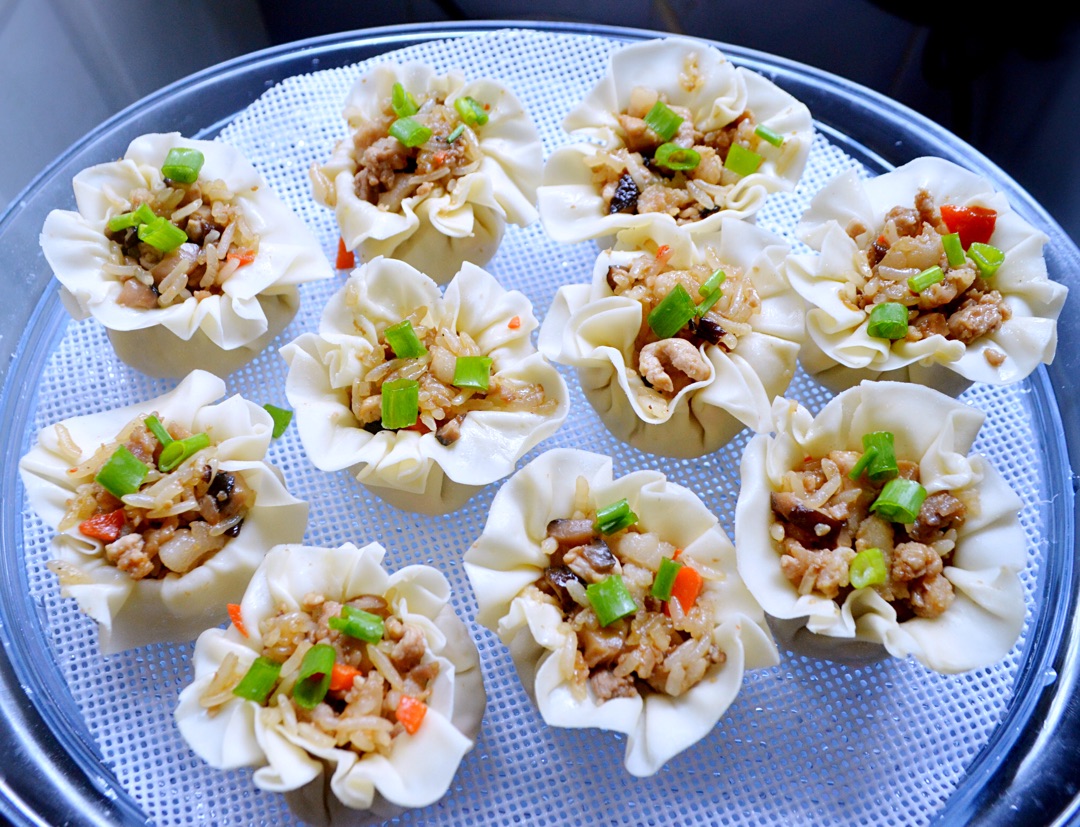Shumai, Traditional Chinese Food
Shumai is a type of Chinese dumpling often associated with Cantonese cuisine. While many in the West have become familiar with it through dim sum (yum cha), it actually exists in many forms throughout China (and the rest of Asia). Steamed or pan-fried, partially or fully enveloped in the dough, filled with everything from pork to seafood to glutinous rice, it’s not clear what the original shumai was, but the most common forms involve a filling of pork partially wrapped in a thin round of dough before being steamed.
When made properly, the plump, juicy half-wrapped dumplings, burst into a savory pool of flavor in your mouth as you bite into them. Unfortunately, many places puree the filling, giving them a hot-dog-like texture, even worse, some places leave the shumai in a steamer until some unsuspecting soul orders a plate of the dry lumps of mystery meat.
Hohhot Shaomai is a regional variety in Hohhot, Inner Mongolia. The wrapping is a very thin, round sheet of unleavened dough, with a pleated border. There is only one kind of filling, which mainly consists of chopped or minced mutton, scallion, and ginger. Hohhot Shaomai features this extensive use of scallion and ginger, creating a dense combined scent, and a slightly spicy taste. The filling is put in the center of the wrapping and the border of the wrapping is loosely gathered above, forming a "neck" and a flower shaped top. It is then cooked by steaming or pan-frying. Hohhot Shaomai is served in the unit of "Liang", which means either eight steamed ones served in a steamer tier or eight fried ones served in a dish. "Liang" is equal to 50 grams, is traditionally used as an indication of the total weight of the wrapping. Hohhot Shaomai is commonly served with vinegar and tea, due to its greasiness.
Shumai Types
- Japanese Shūmai. Shūmai in Japan have shrimp as the main ingredient and neither pork nor beef is used in the dough. Compared to the Chinese shaomai which is usually minced, the meat in Japanese shumai is ground to a paste.
- Siomay or siomai (sometimes called someday) in Indonesia is pronounced the same way as its sisters and is usually a wonton wrapper, stuffed with filling and steamed. It is served also with steamed potatoes, tofu, hard-boiled eggs, steamed bitter gourd and cabbages, all are sliced and topped with peanut sauce and kecap manis (sweet soy sauce). Because the population of Indonesia is largely Muslim, pork siomay is rare and is usually made from various fish, most commonly wahoo or mackerel tuna. This variant is less common in Western countries.
- Siomai (Visayan and Tagalog: siyomay) in the Philippines is often ground pork, beef, shrimp, among others, combined with extenders like garlic, green peas, carrots and the like which is then wrapped in wonton wrappers. It is commonly steamed, with a popular variant being fried and resulting in a crisp exterior. It is normally dipped in soy sauce with squeezed calamansi (Philippine lime) juice, and a chili-garlic oil is sometimes added to the sauce.
Steamed Pork and Mushroom “Siu Mai” Dumplings Recipe
Cook time 8 Prep time 25 Serves 12-14
Ingredients
For the Filling
115g ground pork
3 fresh shiitake mushrooms, stemmed and finely chopped
1 large spring onion, green part only, finely chopped
1 tbsp fresh ginger, peeled and grated
1 tbsp light soy sauce
1 tbsp Shaohsing rice wine or dry sherry
1 tsp toasted sesame oil
Sea salt
Ground black pepper
2 teaspoons cornflour
For the Dumplings
10 wonton wrappers (square)
15 goji berries**
Vegetable oil, optional if not using perforated parchment
For the Dipping Sauce
1 tbsp hot Guilin chilli sauce
1 tbsp light soy sauce、
Method
In a large bowl, combine all the ingredients for the filling and mix well.
Take one wonton wrapper and place one heaped teaspoon of the filling in the center. Then gather up the sides of the wonton wrapper and mold around the filling into a ball shape, leaving the center exposed. Dip your finger in some water and run it around the top of the wonton wrapper. Fold the excess wrapper down and pinch the wonton wrapper around the filling firmly to prevent it from opening up and separating from the filling when cooked. Top each dumpling with a goji berry.
Oil the bottom of a bamboo steamer and/or line it with a piece of perforated parchment paper. Place the dumplings in the steamer, cover with a lid and place over a pan or wok of boiling water (making sure the water does not touch the bottom of the steamer). Steam the dumplings for 7-8 minutes until cooked.
Meanwhile, combine the chili and soy sauces in a bowl. Serve with the dumplings.
Search
Categories
Popular Posts



















Comments: 0
No comments